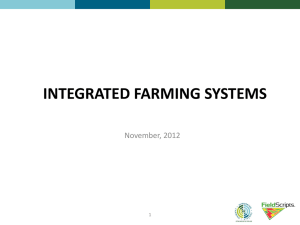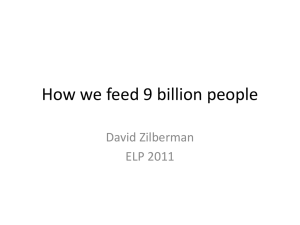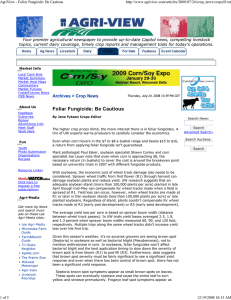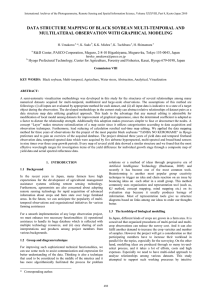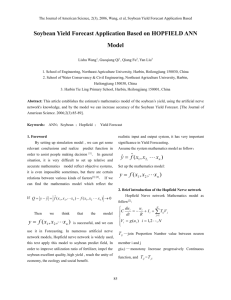a Copy - Purdue Agriculture
advertisement
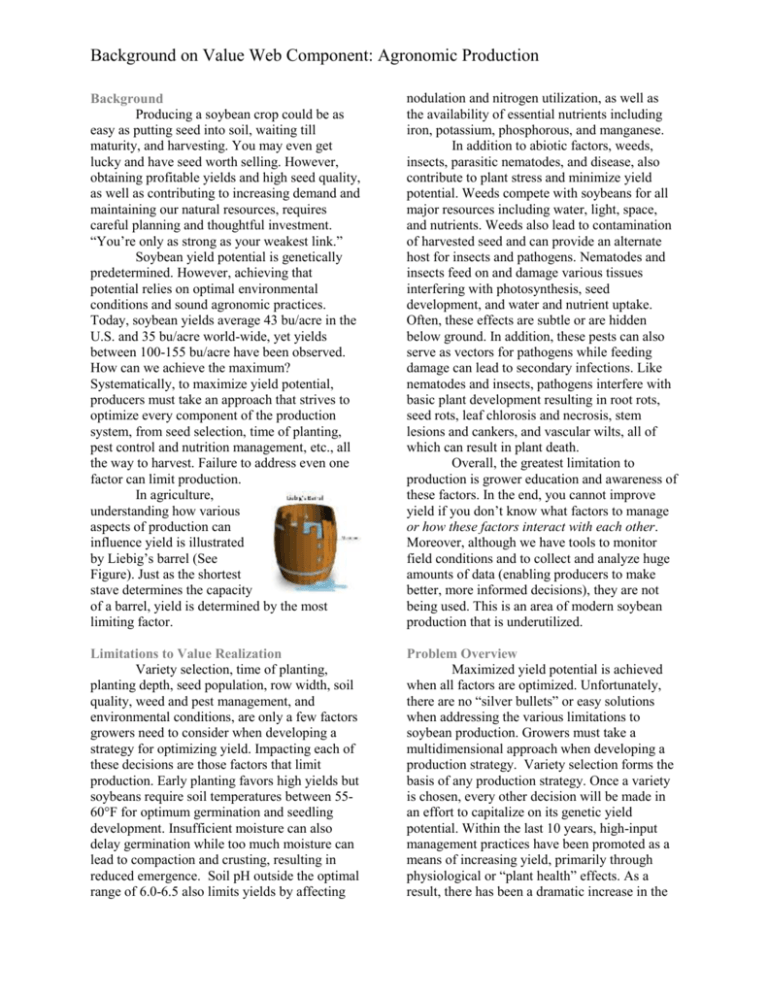
Background on Value Web Component: Agronomic Production Background Producing a soybean crop could be as easy as putting seed into soil, waiting till maturity, and harvesting. You may even get lucky and have seed worth selling. However, obtaining profitable yields and high seed quality, as well as contributing to increasing demand and maintaining our natural resources, requires careful planning and thoughtful investment. “You’re only as strong as your weakest link.” Soybean yield potential is genetically predetermined. However, achieving that potential relies on optimal environmental conditions and sound agronomic practices. Today, soybean yields average 43 bu/acre in the U.S. and 35 bu/acre world-wide, yet yields between 100-155 bu/acre have been observed. How can we achieve the maximum? Systematically, to maximize yield potential, producers must take an approach that strives to optimize every component of the production system, from seed selection, time of planting, pest control and nutrition management, etc., all the way to harvest. Failure to address even one factor can limit production. In agriculture, understanding how various aspects of production can influence yield is illustrated by Liebig’s barrel (See Figure). Just as the shortest stave determines the capacity of a barrel, yield is determined by the most limiting factor. nodulation and nitrogen utilization, as well as the availability of essential nutrients including iron, potassium, phosphorous, and manganese. In addition to abiotic factors, weeds, insects, parasitic nematodes, and disease, also contribute to plant stress and minimize yield potential. Weeds compete with soybeans for all major resources including water, light, space, and nutrients. Weeds also lead to contamination of harvested seed and can provide an alternate host for insects and pathogens. Nematodes and insects feed on and damage various tissues interfering with photosynthesis, seed development, and water and nutrient uptake. Often, these effects are subtle or are hidden below ground. In addition, these pests can also serve as vectors for pathogens while feeding damage can lead to secondary infections. Like nematodes and insects, pathogens interfere with basic plant development resulting in root rots, seed rots, leaf chlorosis and necrosis, stem lesions and cankers, and vascular wilts, all of which can result in plant death. Overall, the greatest limitation to production is grower education and awareness of these factors. In the end, you cannot improve yield if you don’t know what factors to manage or how these factors interact with each other. Moreover, although we have tools to monitor field conditions and to collect and analyze huge amounts of data (enabling producers to make better, more informed decisions), they are not being used. This is an area of modern soybean production that is underutilized. Limitations to Value Realization Variety selection, time of planting, planting depth, seed population, row width, soil quality, weed and pest management, and environmental conditions, are only a few factors growers need to consider when developing a strategy for optimizing yield. Impacting each of these decisions are those factors that limit production. Early planting favors high yields but soybeans require soil temperatures between 5560°F for optimum germination and seedling development. Insufficient moisture can also delay germination while too much moisture can lead to compaction and crusting, resulting in reduced emergence. Soil pH outside the optimal range of 6.0-6.5 also limits yields by affecting Problem Overview Maximized yield potential is achieved when all factors are optimized. Unfortunately, there are no “silver bullets” or easy solutions when addressing the various limitations to soybean production. Growers must take a multidimensional approach when developing a production strategy. Variety selection forms the basis of any production strategy. Once a variety is chosen, every other decision will be made in an effort to capitalize on its genetic yield potential. Within the last 10 years, high-input management practices have been promoted as a means of increasing yield, primarily through physiological or “plant health” effects. As a result, there has been a dramatic increase in the Example of Complex Issue Affecting the Agronomic Production use of pesticides in soybean production. The common practice of uniform pesticide applications as a means of insuring no pests may not be providing the economic returns or pest protection desired. What’s Been Done to Address Problem The following example demonstrates that effectively addressing “agronomic production” issues requires extensive collaboration and cooperation across several disciplines—an approach that has made Purdue University a leader in understand and managing complex issues. In 2009, Purdue University extension specialists Drs. Kiersten Wise (plant pathology), Bill Johnson (weed science), and Christian Krupke (entomology), initiated a project to study the impact of foliar fungicide and insecticide applications on soybean growth and yield when disease and insect pressure were minimal to test the idea that high intensity management may not provide the best solution for yield and pest management. Small-plot field trials were established on three Purdue farms around the state from 2009 to 2012 and included varying combinations of glyphosate (herbicide), Headline (fungicide), and Warrior (insecticide). Complementary largescale trials were also established from 20102013 in multiple locations throughout Indiana. These trials included applications of glyphosate alone, Headline alone, or Headline+Warrior in combination. Results from the small-plot trials indicated that applications of fungicides and insecticides when disease or insects weren’t present improved yields but the increase depended on timing of the application and was inconsistent from year-to-year. Likewise, data from the large-scale trials indicated that “insurance” applications were associated with higher yields, but this increase was dependent upon the region. Based on economic analysis of these studies, high-input management practices as a means of improving soybean yield, was economically practical only 30% of the time. As such, Purdue University advises growers to monitor their fields for disease and insects and to apply fungicides and insecticides only when and where appropriate. Doing this can prolong the efficacy of these chemicals while saving as much as $40/acre in application costs. Reaching these conclusions required collaboration among agronomists, plant pathologists, entomologists, and economist from research and Extension. The research has fostered national interest in information on fungicide efficacy and proper usage, resulting in the first national soybean fungicide efficacy table (Purdue Extension Publication BP-161-W) and the popular “Fungicides for Field Crops” publication.

